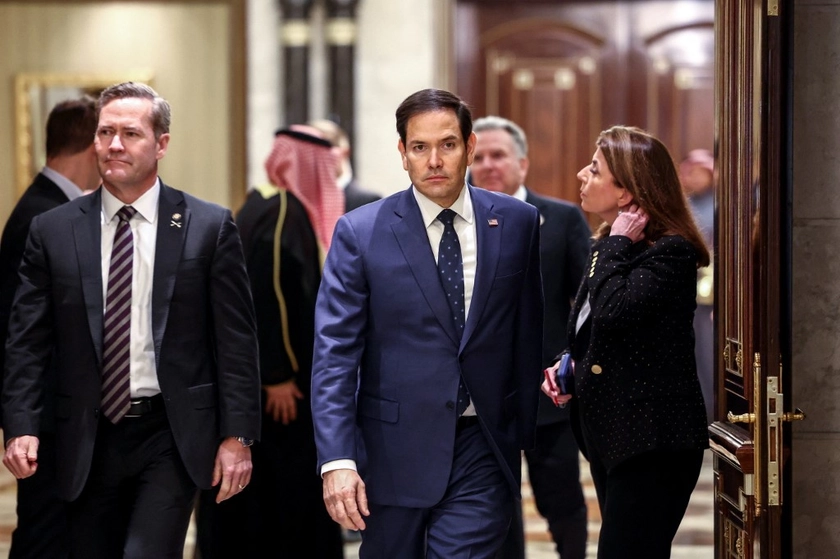The signing of the Centennial Partnership Agreement between Ukraine and the United Kingdom on Jan. 16, is a transformational moment of Euro-Atlantic integration. This, despite the fact that the UK is no longer a member of the EU.
According to the provisions of the Agreement: “The Parties will develop areas whose importance to Euro-Atlantic peace and stability goes far beyond war, recognizing Ukraine’s important role in protecting Euro-Atlantic security and paying particular attention to interoperability and Ukraine’s contribution as a future NATO ally.”
JOIN US ON TELEGRAM
Follow our coverage of the war on the @Kyivpost_official.
The significance of the agreement
Until 2014, the attempts of the Ukrainian political elite to balance between different geopolitical poles and civilizational trends led to institutional uncertainty about the course of the country’s foreign policy. Despite the longstanding cooperation between Ukraine and the Euro-Atlantic community in the areas of defense and security, the countries and structures of the community had no obligations to collectively protect the territorial integrity and sovereignty of Ukraine at the time of the Russian aggression against Ukraine in 2014.
The Budapest Memorandum should not be considered as it only was between certain parties and at this point, is null and void.
Between 2014 and 2022, Ukraine gradually enshrined Euro-Atlantic integration as a foreign policy vector in its legislation, including the Constitution of Ukraine. During this period, the state leadership ensured that integration into the Euro-Atlantic community was actually and legally fixed as a doctrinal strategic goal of Ukraine’s foreign policy. This process enjoyed significant national and political support within the country.

Trump Megaphone New York Post Calls Out POTUS Lies
It is worth noting that after Ukraine gained independence and before the events of 2014-2015, the institution of “strategic partnership” did not have a clear geopolitical definition and largely depended on the political situation and the expediency of establishing in-depth cooperation with a particular country.
Russia’s full-scale aggression in February 2022 and the continued resilience of the Ukrainian Armed Forces convinced the Euro-Atlantic community to make significant adjustments to its strategy of relations with Ukraine.
On the one hand, NATO, as the main security organization in the Euro-Atlantic area, and the countries that make up the Euro-Atlantic community did not want a direct military confrontation with Russia and its allies, including the possible use of nuclear weapons.
On the other hand, the United States and its allies in the Euro-Atlantic space organized an unprecedented campaign in support of Ukraine, mobilizing almost the entire democratic world in countering Russian aggression. Euro-Atlantic support for Ukraine combined diplomatic, humanitarian, military and political components.
Support for Ukraine
The international response to counteract Russia can be viewed as three horizontal lines (tracks):
- Bi-laterally – Ukraine / US
- Multilaterally:
- Ukraine / NATO (with the participation of the US)
- The Ukraine Contract Group in “Ramstein” format - the US, NATO and some Pacific Rim countries (Japan, South Korea, Australia and New Zealand).
Ramstein format is a “golden mean” in terms of the interests of different countries supporting Ukraine. The practical result of the launch of the Ramstein format was the political and legal formalization of specific packages of military and technical assistance to Ukraine.
The longer-term view
The indecision of NATO leaders regarding Ukraine’s full membership in the organization, Russia’s use of tactics of warfare of attrition, terrorizing the population, and systematic destruction of Ukrainian economic infrastructure prompted political circles in the Euro-Atlantic community to seek alternative approaches to deeper cooperation with Ukraine in the context of war.
The Ramstein format which consists of 27 separate security agreements among some members and Ukraine is unique for both the Euro-Atlantic countries and Ukraine. It is not intended to replace Ukraine’s eventual membership in NATO but is viewed as an interim solution to NATO membership in the future.
An important step and a new stage in Ukraine’s cooperation with the Euro-Atlantic community is the signing of the Centennial Partnership Agreement between Ukraine and the United Kingdom in January 2025.
Attention should be paid to the value factor of the common system of the civilizational paradigm of Ukraine and the countries of the Euro-Atlantic area.
The long-lasting defense since 2014 of the principles of freedom by Ukrainian citizens, at the cost of their own lives in the face of Russian aggression, has forced the Euro-Atlantic community to recall the declared principles and values of Western civilization. This lays the groundwork for joint military, political, and humanitarian projects between Ukraine and the countries of the Euro-Atlantic space.
Thus, Euro-Atlantic integration for Ukraine means membership in a separate format of collective security, possible integration into NATO, and inclusion in the Euro-Atlantic space of common values and principles of Western civilization.
The Centennial Partnership Agreement between Ukraine and the United Kingdom is the largest step to date. Ukraine is ensuring this by the willingness of its soldiers and citizens to spill their blood for the common cause and values of the Euro-Atlantic Community.
The views expressed in this opinion article are the author’s and not necessarily those of Kyiv Post.
You can also highlight the text and press Ctrl + Enter











